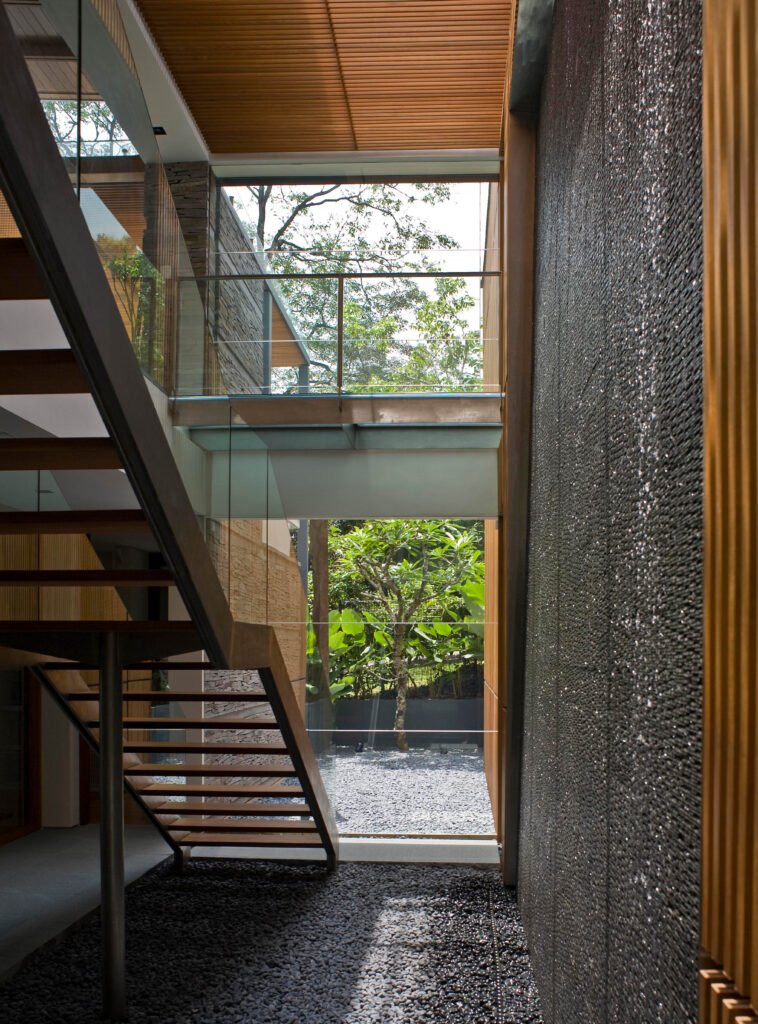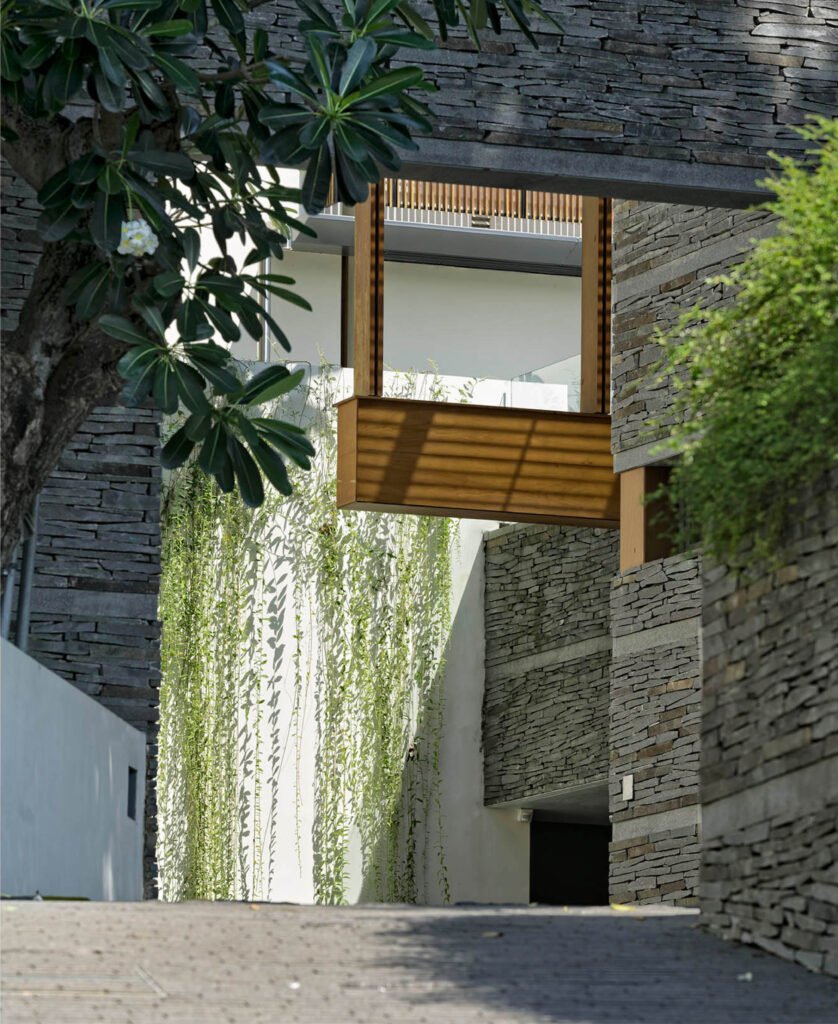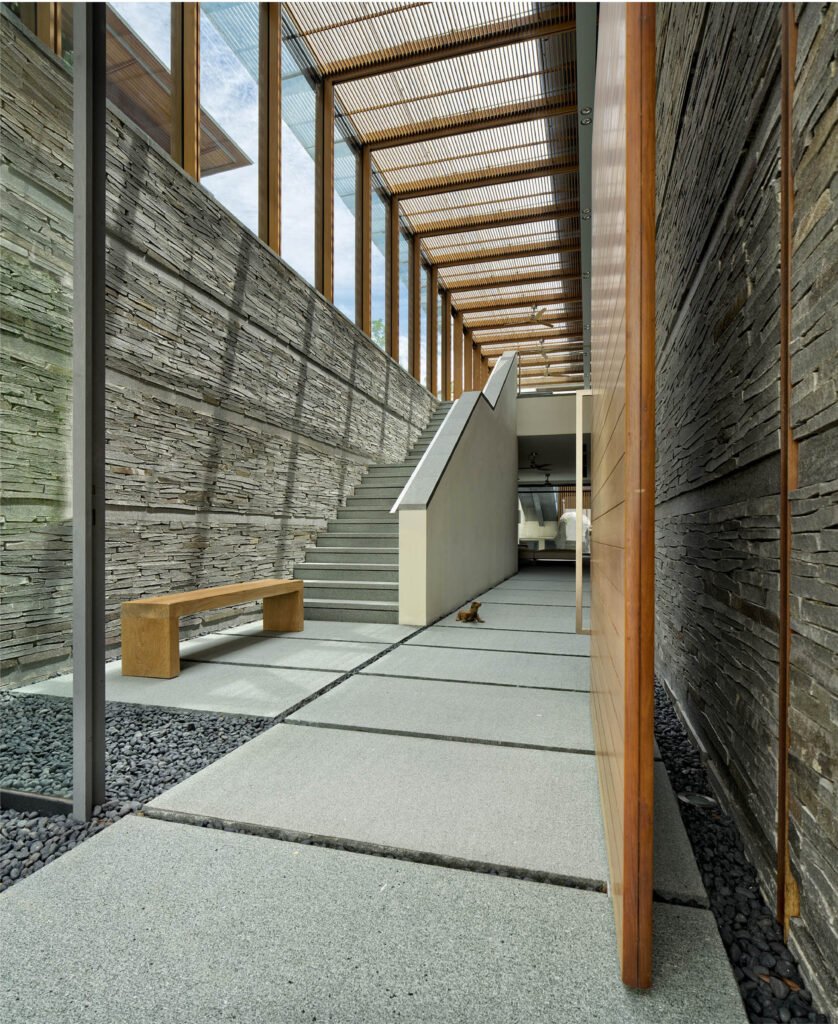Introduction and Interview Patrick Kasingsing
Images Ernesto Bedmar Architects
EBA gracefully straddles the line between widespread renown and a devoted cult following. Founder and director Ernesto Francisco Bedmar, unlike most of his tropical modern contemporaries, has chosen to tread a quieter path, preferring patient artistry and quiet brilliance. The Argentinian from Córdoba flitted between projects in South Africa, Hong Kong, and Macau, before finally planting his feet in Singapore via a partnership with designer Patti Shi in 1986. After making a name for himself in the realm of high-end residential architecture, Bedmar opened a new design chapter, with a studio under his name with former employee-turned-co-director Iylia Zakaria, in 2015.
But before the 12-strong team of Ernesto Bedmar Architects could emerge, Bedmar put in the work, and luckily, he was not without help. He worked under the tutelage of famed Argentinian modernist Miguel Ángel Roca, enjoyed a stint with venerable Hong Kong firm Palmer and Turner (now the P&T Group), and even collaborated with eventual Pritzker Laureate Alvaro Siza Vieira on an urban planning project in Macau.
Bedmar’s present spatial direction, one that has earned him praise from both peers and clients, deftly blends his modernist education with a sincere embrace of the ASEAN region’s tropicality and cultural diversity. This architectural evolution is in no small part due to his ‘accidental’ move to Singapore, a place he has called home for nearly four decades. The Lion City provided the once-itinerant Argentinian the opportunities he required to hone his architectural voice and gain the solid footing he needed to run a practice.


A house in Singapore, Header: A villa in Bali, Indonesia
Despite the boutique firm’s modest online presence (countered only by the studio’s reverence for print documentation), Bedmar has garnered the respect and admiration of numerous Southeast Asian architects, both up-and-coming and established, whom I have had the pleasure of meeting during my years of writing about the field. Hailing from Indonesia, Singapore, and The Philippines, these architects heaped praise on Bedmar and Co’s consistency in crafting luxurious homes that are simple but impactful, artfully blending clean, contemporary lines with the sensorial quality and openness inherent in the best of tropical spaces.
The modest sampling of beautiful photography online and scant information on the practice only added to the mystique of Ernesto Bedmar Architects, further feeding my curiosity and eventually leading me to cold email the man himself back in 2018 for an interview. I received a firm but apologetic no as Bedmar was waist-deep then in the production of Bedmar & Shi in The Tropics, a hefty two-volume retrospective of the thirty-year partnership by Hong Kong’s Oscar Riera Ojeda Publishers.
Five years and a pandemic later, I struck up the courage to ask for an interview and finally got a yes. What follows are the enlightening exchanges from a nearly two-hour-long conversation with Bedmar and Zakaria. It was midday, and we were safely ensconced within the studio’s whitewashed, repurposed Chinatown shophouse.
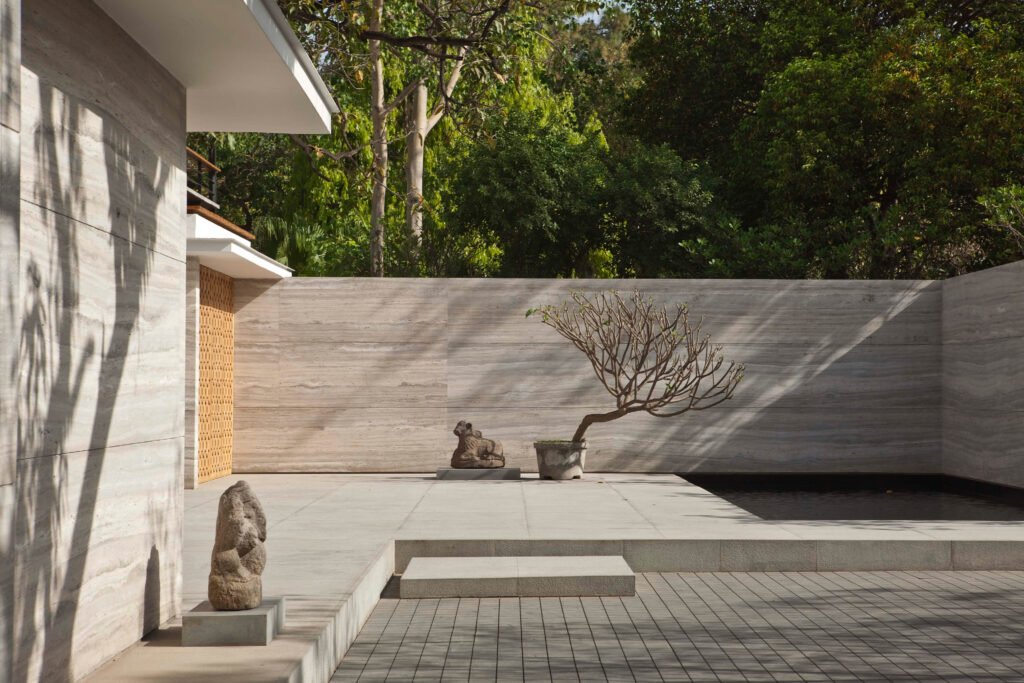

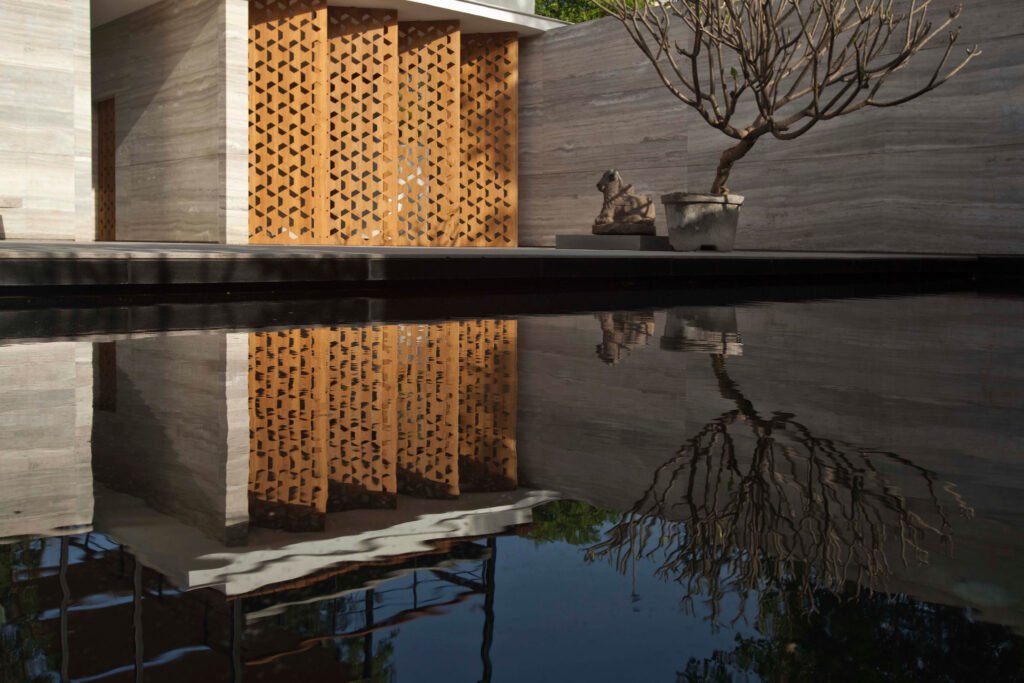

Good day, Mr. Bedmar. The basics first. How did an Argentinian architect find his way to Singapore?
Ernesto Bedmar, principal, Ernesto Bedmar Architects: Oh my, it is a very long story. I used to work for Miguel Ángel Roca in Argentina, a well-known architect and disciple of Louis Kahn. What happened was Miguel Roca was commissioned to do a project in Soweto during a time when Africa was facing significant challenges. Mandela was in jail, and South Africa wanted to do something for the Black population. They appointed my principal to work on this town planning project. Along with two colleagues, we young architects set off for South Africa. However, I honestly did not like the work in South Africa and never got used to the system.
I wanted to go back to Argentina but was told there were no jobs there. Instead, I was sent to Hong Kong to work on a project on Lantau Island. While working on that project, the decision was made for Hong Kong to be handed over to China in 1997. This caused the project we were working on to collapse, and my company wanted to send me back to South Africa, which I refused. At that time, someone I knew, who was working on a project in Macau, offered me a job there. This was the project in which the architect Alvaro Siza Vieira was involved.
After finishing that project, I was offered a job in Singapore, which I took. I worked for a company here for two years until I decided to open my practice. So, you could say I ended up in Singapore by accident.
I see! I had no idea you had the chance to work with Senhor Siza!
Bedmar: Well, Miguel Roca and Alvaro Siza knew each other very well. I happened to meet Siza in Venice with Miguel, and we learned that he had won an international commission. I thought he might be looking for someone who could speak Portuguese, English, and Spanish. The similarity between Spanish and Portuguese allowed me to communicate effectively. That is how I ended up in Macau.




Right. Now, so it is one thing to be working in Singapore and another to start your firm in the Lion City. So, out of all the places you have worked in, why Singapore?
Bedmar: The reason I started my own company, Bedmar & Shi, was because I was offered a great job opportunity in Hong Kong with an attractive salary. At that time, I was planning to leave Singapore, but my partner convinced me to stay and complete the ongoing project we were working on. Surprisingly, during that period, we managed to establish a reputation for crafting beautiful interiors, and this caught the attention of numerous developers in Singapore who were eager to collaborate with us.
However, I discovered that working with developers was quite exhausting, unproductive, and not as financially rewarding as I had hoped. It made me reassess my priorities, and I decided to shift my focus to residential projects instead. There is something about working on homes and building that special connection with clients that truly resonated with me. It was from that moment on that I dedicated myself to the realm of residential architecture.
Today, we take on various scales of residential projects, treasuring the personal connections we form with our clients throughout the process. As for our future, we have no intentions of opening another studio elsewhere, whether it be in Argentina or any other place. We are content being based right here in Singapore, where we feel at home and inspired to create memorable architectural experiences.
I see. So, well, you brought up Argentina. Naturally, there is a certain way of teaching architecture in your homeland. Then, you ended up practicing architecture in distant lands with different climates and cultures, which naturally has a different approach to architecture. How challenging was it to evolve or unlearn what you were taught to align with your current context?
Bedmar: My fascination with Asia’s traditional vernacular architecture, discovered during frequent travels, has made me more sensitive and deeply appreciative of its beauty and significance. But, saying that, my frequent use of stonework, for example, is reminiscent of my memories of Argentina when I was studying there. There are elements that you can never give up, which come with you from your formative years. And that is still true today. However, over time, I have learned to find a way to reconcile what I am familiar with and what I have discovered along the journey. No need to unlearn. You mentioned the word “evolve,” which I think is more of what needs to be done.
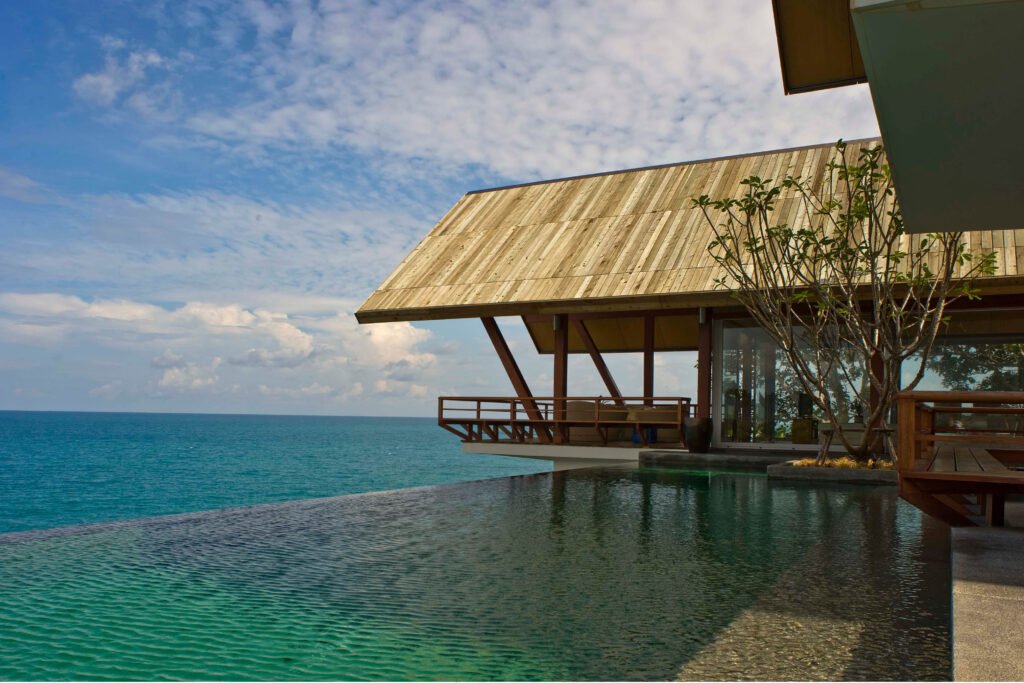
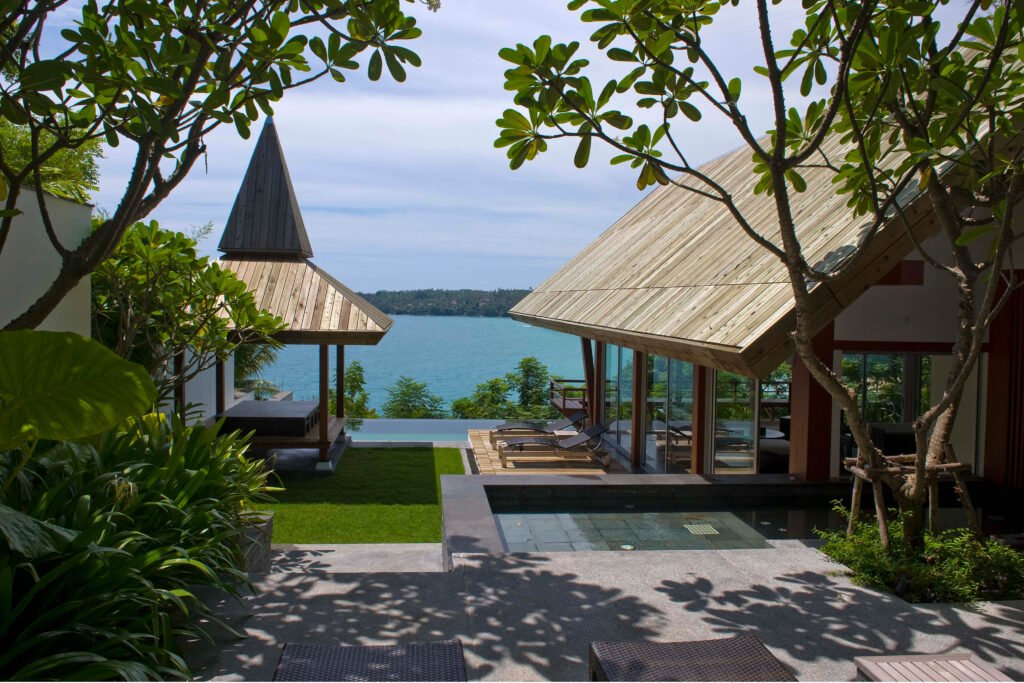
Now this is a question both you and Iylia can answer. EBA appears to mostly work within the residential typology with a few exceptions. Mr. Bedmar touched on his penchant for residential commissions a while ago, but can you elaborate more on what invigorates the studio to further work within this typology?
Iylia Zakaria, co-director, Ernesto Bedmar Architects: Even before I arrived, my chief had already made a name for himself in the field of high-end residential architecture. This reputation is what attracted more people to seek our services for residential projects. I have long had a strong inclination toward designing homes. The process of working on someone’s residence involves establishing a unique relationship with the client, distinct from the experience of working on commercial projects, such as shopping malls or hospitals. Although there is nothing inherently wrong with taking on large-scale projects, I naturally find myself drawn toward the intricacies, details, and unique relationships that come with the design of residential architecture.
I understand.
Bedmar: The reason I chose to focus on residential architecture was due to a serendipitous turn of events. My architect title was not initially recognized in Singapore, limiting me to interior work. However, this constraint led to the creation of some fine-looking interiors for boutiques and restaurants, which quickly garnered recognition. Prominent developers in Singapore sought out Bedmar & Shi to handle their interior projects, marking a significant step towards recognition. Yet, as I have already mentioned, my encounters with developers proved to be a draining experience. Constantly communicating with multiple individuals representing the company, each seeking different ideas for presentations, became tiresome and unproductive. It soon became evident that this was not the path I desired.
The turning point came when I embarked on my first residential project. Collaborating closely with the client, immersing myself in every aspect of the house, from material selection to intricate details, brought immense joy and a sense of achievement. It was a pleasurable experience, and from that moment, I knew I wanted to focus solely on residential projects, big or small.
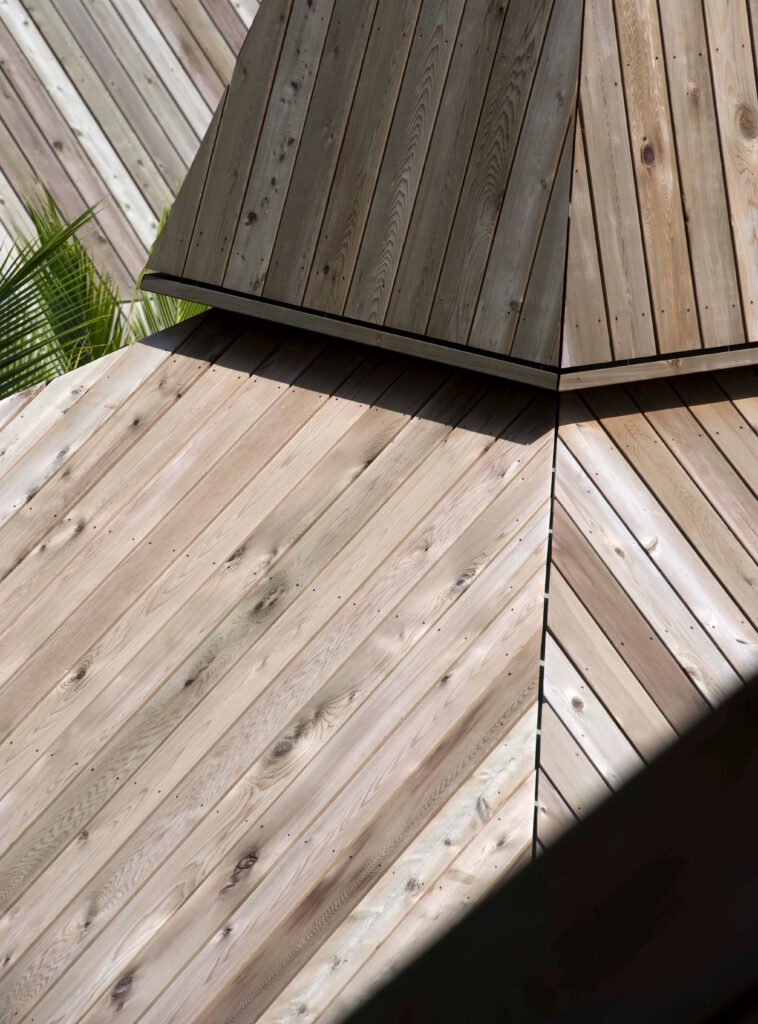

“The turning point came when I embarked on my first residential project. Collaborating closely with the client, immersing myself in every aspect, from material selection to intricate details, brought immense joy.”
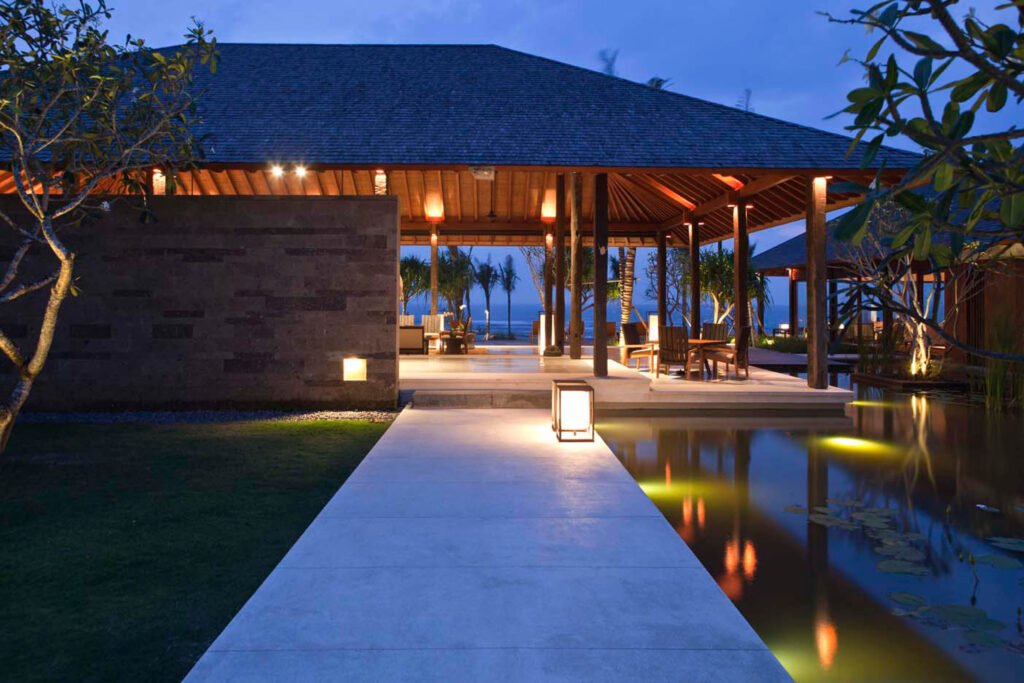

Is there any other typology that you have not explored yet but have always wanted to work on?
Bedmar: Absolutely. We have been eager to take on hospitality projects like small boutique hotels for quite some time now. Although we have not had much success yet, it is a typology I am genuinely interested in exploring further. We have worked on some projects in Bali, which people use for rentals, but they cannot be classified as hotels.
Why do you consider your previous forays into hospitality unsuccessful?
Bedmar: It might just be bad luck, to be honest. We had a couple of opportunities, but for some reason, they did not materialize. We invested a lot of time and effort into one project in the Maldives, but it did not come to fruition. The same happened with projects in Indonesia and Thailand. Maybe there were external factors unfavorable to the venture, or the client fit was not great, or maybe the timing is not yet right…
I can see why the typology appeals to you. It is like designing a residential experience but for short-term use. It is a unique challenge.
Bedmar: Indeed, and what is interesting for me is that despite the brief duration of the guests’ stays, these hospitality projects often take a very long time to materialize, sometimes even up to 12 years for large-scale developments. Naturally, for a small firm like ours, sustaining a project for that long can be challenging. However, whenever opportunities arise and resources permit, we try our best to take them on.




Okay, let us now delve into your studio’s architectural approach. Designing luxury projects involves a delicate balance of accommodating clients’ desires while maintaining artistic integrity. How does EBA strike this balance between ego and service?
Bedmar: When we collaborate with clients, we prioritize engaging with them from the very beginning to grasp their preferences and architectural tastes. Detailed briefs provided by clients are crucial for us to understand their vision. We infuse our knowledge and style, but it is not always an instant match. We work in tandem with the client, making adjustments until both parties are completely satisfied and at ease.
We always remind ourselves that every project is a collaborative effort between the designer and the user. Our clients are not just our financiers; they are our co-creators. While we have expertise in architecture and design elements, the client, being the ultimate user of the space, should have the final say.
So, have there been instances where you had to turn down projects because the client’s vision did not align with your style?
Bedmar: Yes, a few times. Sometimes, when you build a name for yourself, people want to use your name, but they have a completely different understanding of architecture. They want something outside of our language and style. That is why we insist on meeting and talking to the client first before engaging in a project. If we sense that their vision does not match ours, we decline the project. It goes both ways.
Right. Both the architect and the client need to be on the same page for a project to be successful.
Bedmar: Absolutely. Getting to know the client and having them understand us is crucial. Without that understanding, we will not achieve success, and our boss won’t be happy.
A lot of money is involved from the client’s point of view, right? So, they should know exactly how we work and how we deal with it. And I always say that there are clients who can be more understanding of architecture than others, but there is a significant majority of clients who do not understand the technical aspects.
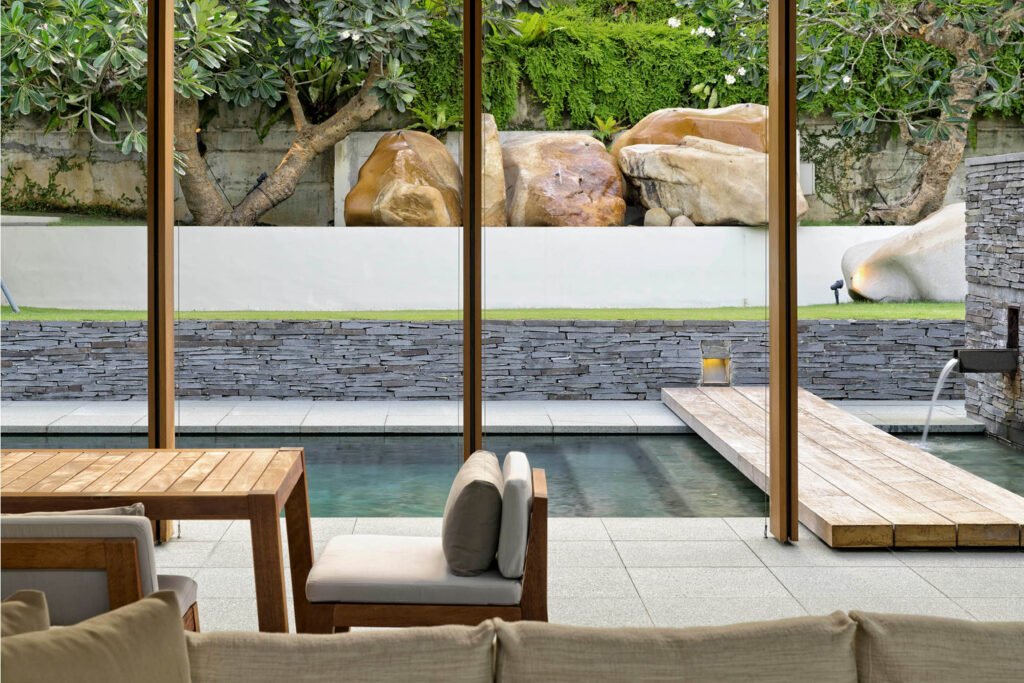

Now, these next few questions are about the firm. Firstly, how many employees does Ernesto Bedmar Architects presently have? And do you intend to stick to this number or grow the company eventually?
Bedmar: Currently, we have a total of twelve people, including ourselves and a couple of admins. We like it that way because it allows us to maintain control over what we are doing, not in an authoritarian way, but to ensure quality. To maintain the quality the firm is known for, expanding and taking on more projects would dilute the quality over time. We are focused on maintaining what we are doing and the opportunities it has given us. Iylia and I make sure we are personally involved in every project, with a team of architects to assist us.
And this means you limit the number of projects you take on to maintain quality?
Bedmar: Of course, there is only a certain number of projects we can manage while maintaining quality. We prioritize quality over quantity. Sometimes, if we are terribly busy, we may have to ask a client to wait a few months before taking on their project to ensure we can maintain the desired quality.
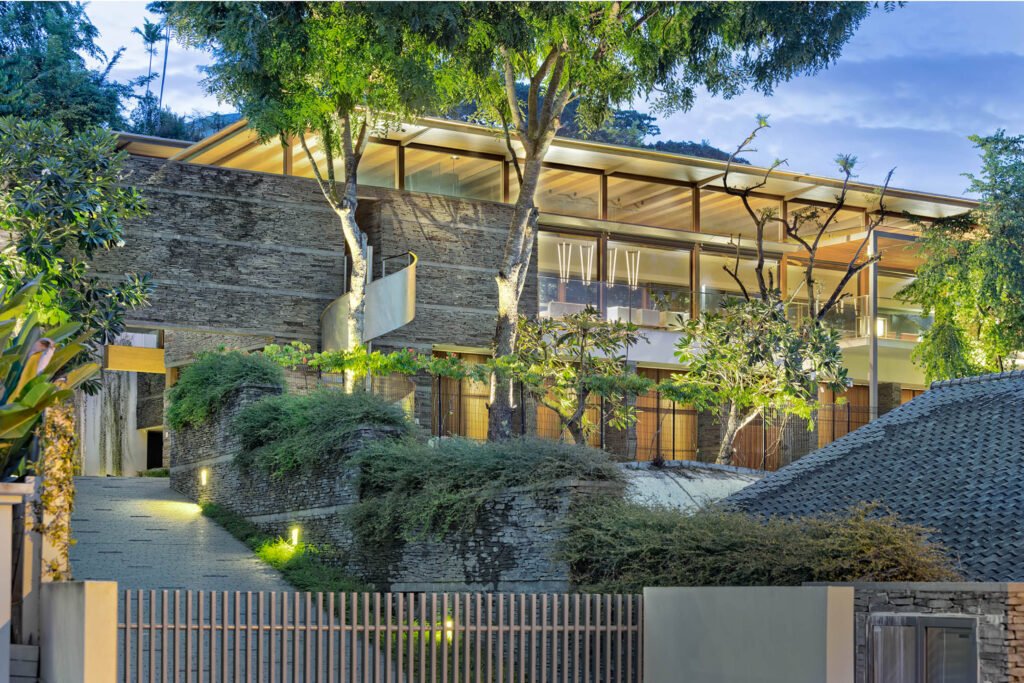

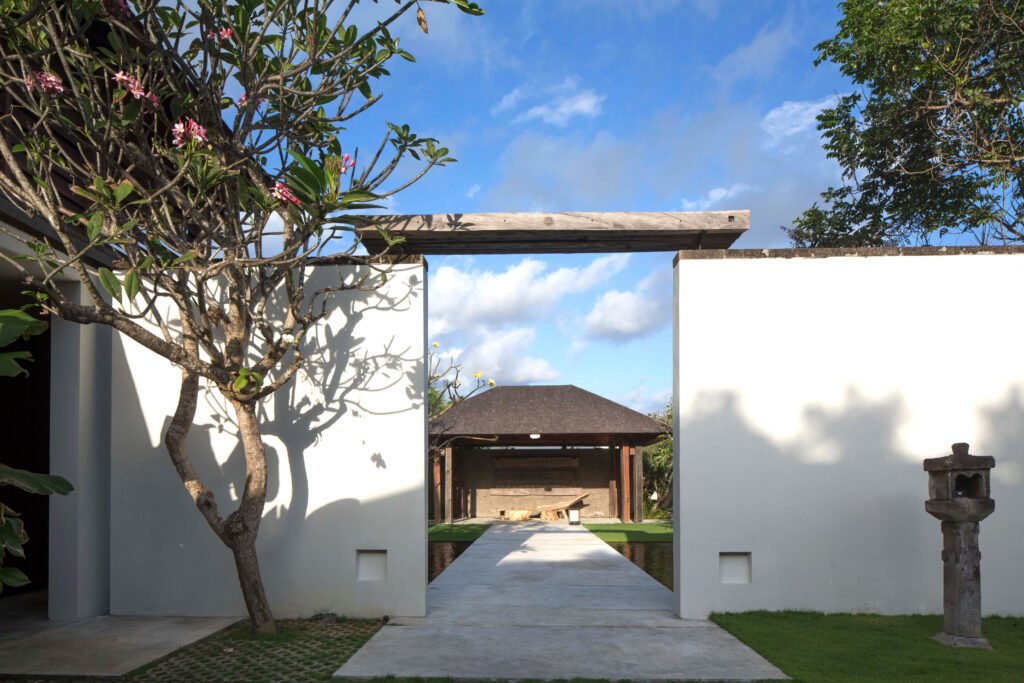

And I guess when you get to the stature and reputation you now maintain, clients are more likely to wait. Now, Mr. Bedmar, as someone who has been practicing architecture for a long time, what would you want to leave behind as an architect or for EBA? At your age, what still energizes you about the practice of architecture?
Bedmar: To be honest, I have not fully thought about it. I am in it for the joy of doing architecture. Architecture has fascinated me since I was a child. It has been a motivating factor throughout my life. I have remained unmarried and have completely surrendered myself to the beauty of my craft. The only legacy I would want is for the people who work with me to learn what it means to be an architect.
To discover the joy in designing spaces for people, it is not just about designing well, but also about being honest, hardworking, and considering how your space impacts and converses with its context.
Each person has their path to personal growth and development. Iylia and I have a similar understanding and approach to architecture, which has made us work positively together.
So, beyond just a business partner, Iylia is also your protégé?
Bedmar: Definitely. Having a partner, especially after 35 years with my practice, is valuable. I constantly learn from Iylia, just as I learned many things from my teachers during my school years. It is always interesting to have someone from whom you can learn certain things and who has qualities and abilities that complement yours. If everything goes smoothly, Iylia will benefit from my experiences, but ultimately, his choices and journey will be his own.
Is there something you still want to achieve as an architect that has eluded you?
Bedmar: No, there is none. I do not have lofty goals set; I am in this field for the joy and the contentment it brings me.
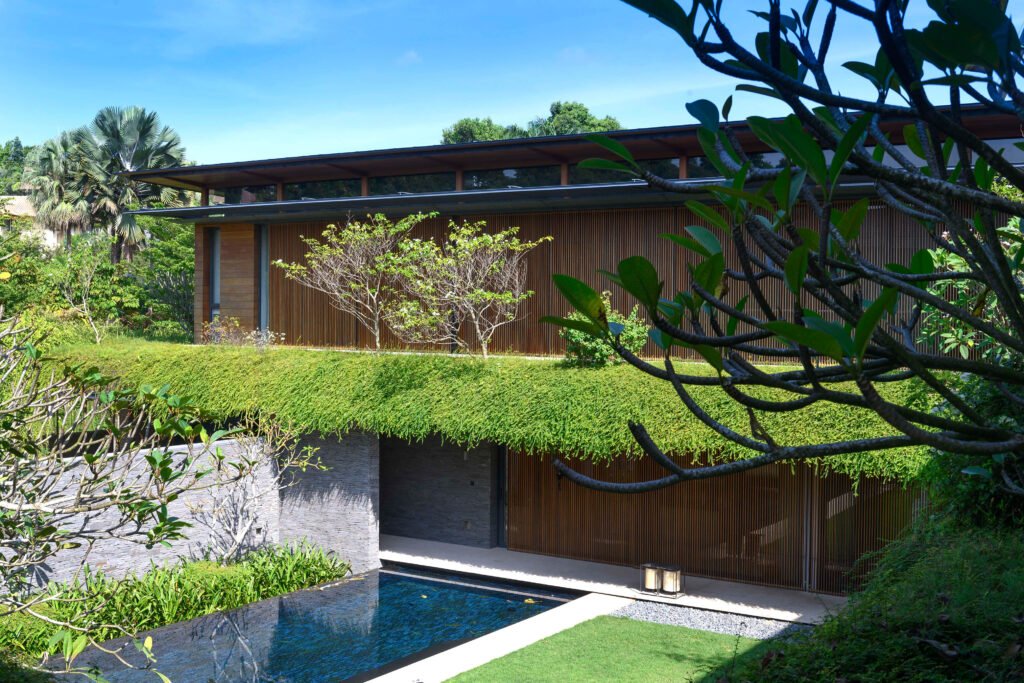

“I am in it for the joy of doing architecture. The only legacy I want is for the people who work with me to learn what it means to be an architect.”


You have amassed a rather devoted set of fans amongst your peers. What sets EBA apart in terms of your approach to tropical architecture?
Bedmar: Our architecture I believe embodies a quiet simplicity. This combination of simplicity with careful attention to detail and a reverence for materiality is what sets our spaces apart. Achieving this level of simplicity is challenging even for an experienced architect.
To attain this design simplicity, we listen intently to both our context and clients, respecting their input. This symbiotic relationship between our creative vision and their needs allows us to create spaces with enduring appeal and user authenticity. The resulting space simply works for the client because it is designed around them. We must remember our role as designers: we design to derive order out of chaos, to draw quiet from amidst the noise.
Additionally, the print publication of our work has allowed people to delve into the details, construction processes, and other elements of our work, benefiting young architects. The generosity of sharing our knowledge has been well-received, I believe.
Iylia, as someone who has admired Ernesto Bedmar’s oeuvre before working with him, what attracted you to his work?
Zakaria: The simplicity and poetry of Ernesto’s work captivated me. It is something intangible, found in proportions, with a sensual quality. When you look at his buildings, you know they were created by us, but there is an elusive aspect that draws people in. It is not just what you see that makes our architecture memorable and beautiful but the emotions it stirs, the moments it enables, and the ideas it can inspire.
So, this is the quality of architecture that holds more value for you?
Zakaria: Eliciting emotion is one of the most challenging aspects an architect can achieve. It involves sensitivity and the thoughtful integration of diverse elements to form a cohesive and inspiring whole. Many architects dedicate considerable time or even their whole lives to mastering this skill.
Bedmar: Architecture, like music, can evoke emotions and deeply impact people. If our work touches someone, we consider ourselves fortunate. Visual beauty alone does not guarantee vitality; true architecture appeals in a multisensorial way, providing not just sensual pleasure but emotional and mental stimulation.
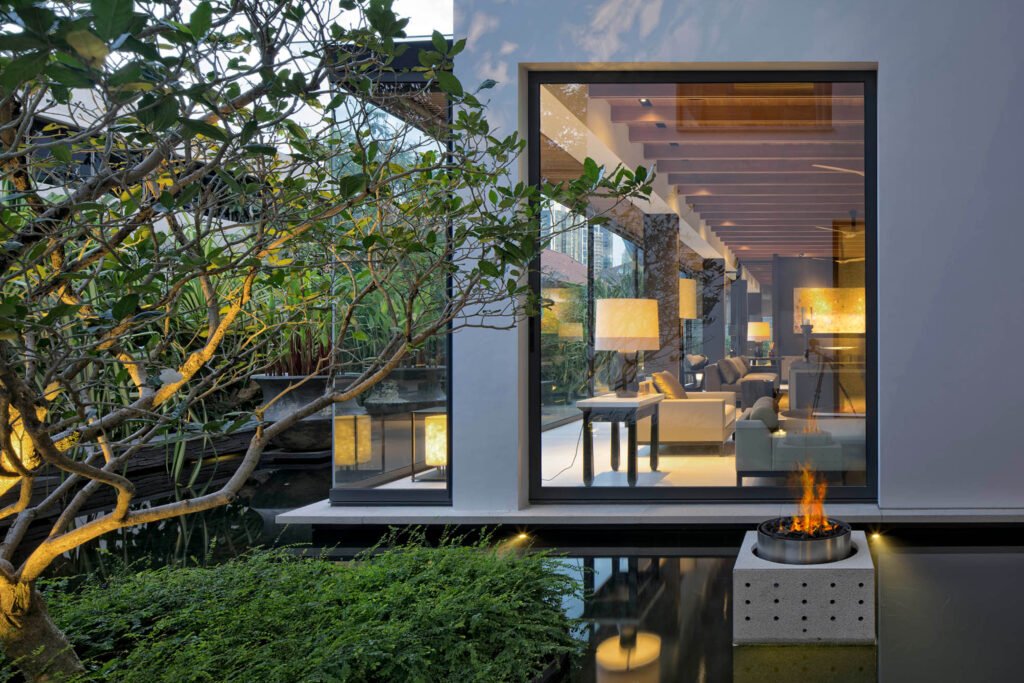

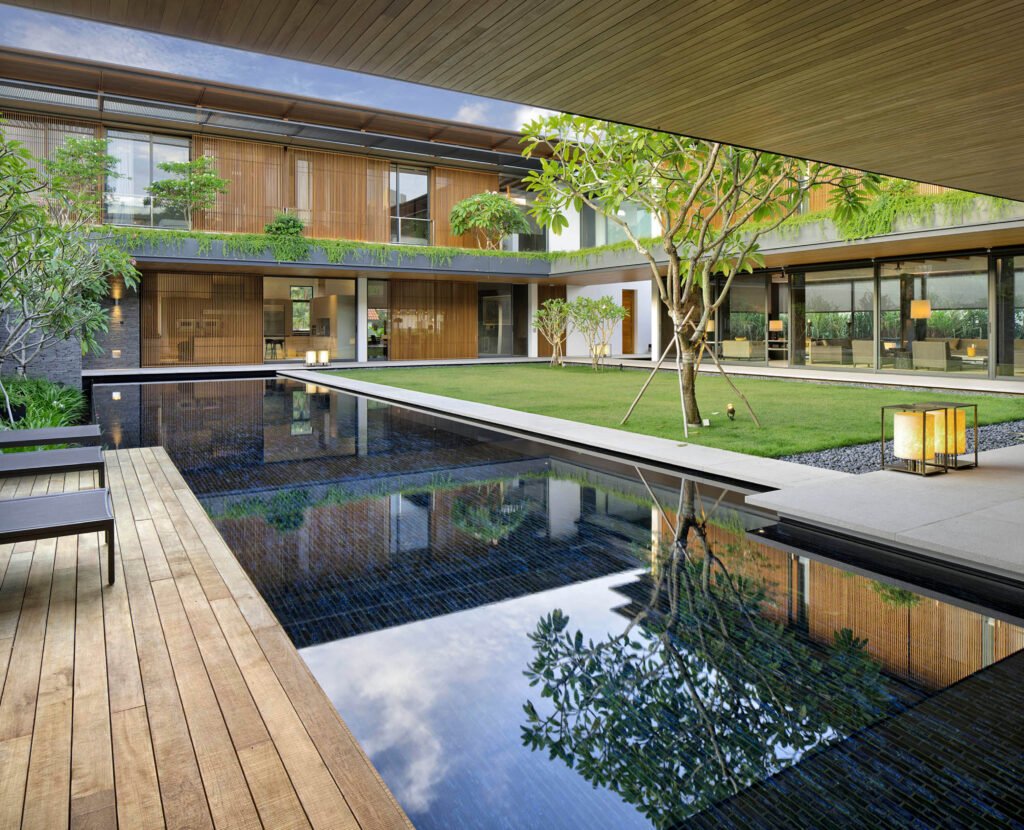

We have touched on beauty, and I now have a sense of how EBA defines beautiful architecture. Would you say that beauty then, in its capacity to inspire is an ideal all architecture should aspire to?
Bedmar: Beauty is of course, subjective, and every architect has their interpretation. We believe that beauty in architecture is multifaceted and goes beyond visual aesthetics. It involves evoking emotions, creating functional spaces, and considering the context and culture. While beauty is important, not all architecture should prioritize it. Architecture should also address functionality, sustainability, and the needs of its users.
We aim to create good buildings that make clients happy to live in them. You could say that inner beauty is what really matters to us—creating an environment that clients appreciate and treasure. Whether it is considered beautiful or not is subjective. We do not want to create something ugly of course, but beauty is not the priority but a result of our hard work.
Understood, but what is then the ideal or quality you aim for every project?
Bedmar: We’re always pushing ourselves to outdo our previous work. I think what we aim for is to create spaces that bring about a sense of calm and tranquility. In the hustle and bustle of today’s world, we tend to forget how valuable rest and taking time to listen to nature can be. We want our spaces to help trigger that pause. That is why we often incorporate large, beautiful gardens into our houses – a little oasis where you can reconnect with nature and recharge your soul.
Zakaria: Architecture is a social responsibility, making a positive impact on the community. As residential architects, our focus is on meeting clients’ needs and inspiring positive change in their lives and surroundings. This, in turn, benefits the environment and the broader social aspect of our communities.
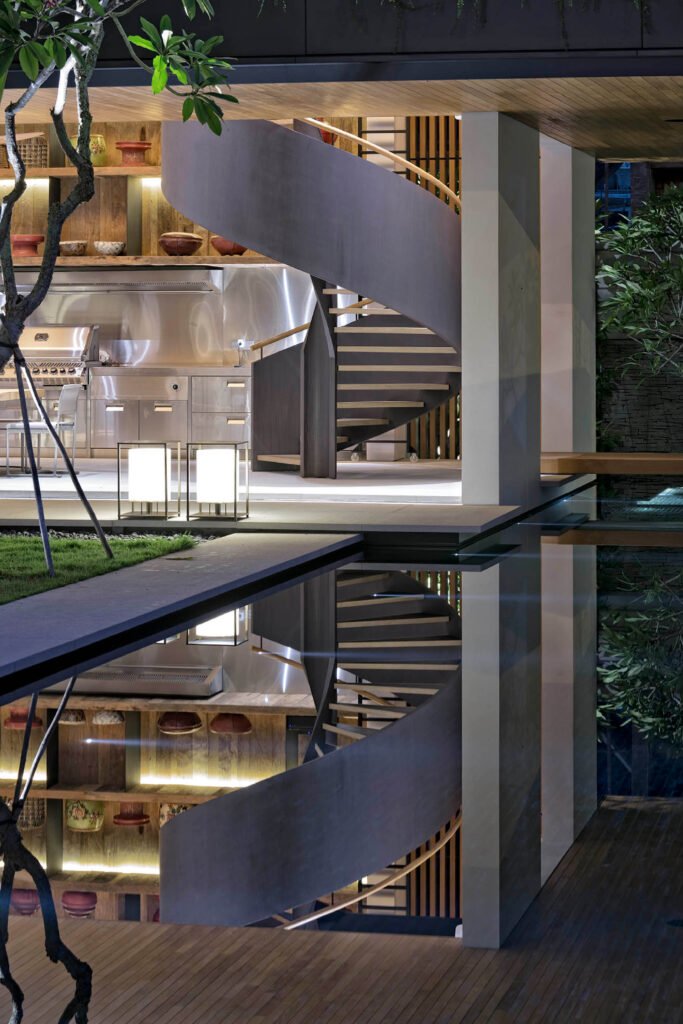

The master and his protégé proceeded to give me a brief tour of the studio’s quarters, where handmade drawings on drafting tables co-exist with new digital tools for spatial crafting. Beauty and utility, history and contemporaneity, binaries bled into spectrums within the studio’s modestly sized heritage shophouse, which manages to cram in a reflecting pool to separate the directors’ space from the studio. Here was that trademark EBA simplicity at play, bringing order into what could have easily been a chaotic, crowded space. This was the closest to a project ocular I am getting but it was enough to corroborate the praise the studio has been getting.
Clearly, Bedmar’s ‘accidental’ move to Singapore has made winners out of everyone. •




